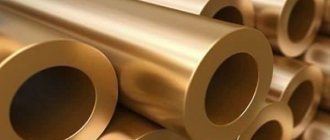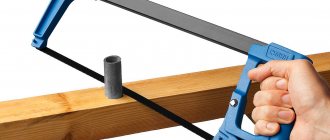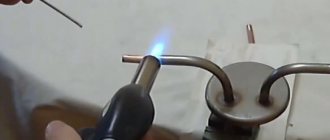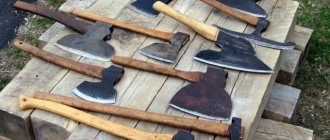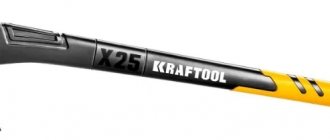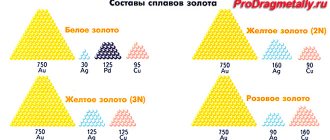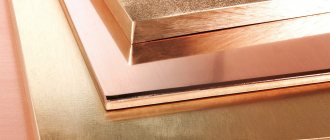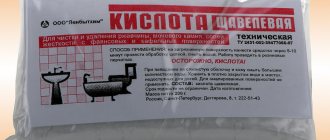Tree
In Rus', dishes were originally made of wood. They ate with wooden spoons from wooden bowls, and used wooden bowls, ladles and jugs. In addition, they wove containers from birch bark - salt shakers, containers for storing flour and cereals.
It is known that birch bark has many medicinal properties - from bactericidal to tonic. This is how the body of our ancestors gradually accumulated the healing properties of trees.
But it is important to take into account that wooden utensils painted with Khokhloma should not be used as food.
Copper
Copper utensils appeared next. Perhaps you also have a copper basin or saucepan in your kitchen? Indeed, in many families, dishes made of copper and its alloys are passed down from generation to generation. And no wonder: they always used it with pleasure! The fact is that, due to its high thermal conductivity, copper has a remarkable quality for cooking - heat is evenly distributed over the surface of the cookware. And therefore, delicious jam, aromatic coffee or a wonderful sauce are obtained in a copper container as if by themselves.
But modern science somewhat dims our emotions - from its point of view, even a very small amount of this metal destroys ascorbic acid in berries and fruits.
And one more thing: food stored in a copper container loses vitamins, polyunsaturated fatty acids in it are easily oxidized, forming compounds dangerous to the body - free radicals. With its frequent use, poisoning is possible.
In addition, copper in a humid environment easily oxidizes and a green or blue-green film appears on the dishes - patina. When heated, it interacts with food acids, forming copper salts that are harmful to the body.
Therefore, after washing, the plate or basin must be thoroughly wiped, avoiding the formation of a film. If patina does appear, then before using the dishes it must be carefully removed from the entire surface. You can do this this way: wipe with table salt soaked in vinegar, and immediately rinse first with warm, then with cold water.
If you have copper utensils, we recommend that you read more about proper handling of them, unless, of course, you value your health. This is not the purpose of this article.
Copper cookware: pros and cons. How to care. Photos, tips, ideas
For a long time in Rus' there were only bowls and plates carved from wood. Many years later, copper utensils appeared and existed in our kitchens for many years. Copper products have always been in demand, and even modern housewives often cook jam exclusively in copper basins.
Dishes made from this metal look elegant. It is believed that food prepared in such vessels has a special taste. Food cooks faster due to uniform heat distribution on the surface. However, copper also has negative qualities.
Ruffoni 6-piece cookware set | 115656 ₽
Copper in the kitchen
Items made from this material are attractive with their appearance: they will look elegant in any kitchen and create a beautiful “highlight” of the decor. The following items are made from copper raw materials:
- frying pans;
- pots of any size;
- coffee pots, teapots, Turks;
- fondue makers.
Manufacturers sometimes combine copper and other materials to make handles or lids, which can extend the life of the product.
Frying pan with lid Ruffoni | 30 cm | 32943 ₽
Professional chefs use metal utensils all the time. Its value lies in reducing the cooking time. Copper is characterized by high heat conductivity, which allows the products to be used to create even particularly complex culinary delights.
The benefits of dishes
Unlike aluminum, copper conducts heat twice as well. “Stainless steel” is significantly inferior to it in these qualities: its heat conductivity is ten times lower.
That’s why in many restaurants they cook on copper utensils, because everything cooks quickly and well in them, without burning. Pans made of this metal are also suitable for everyday use.
Casserole without lid Ruffoni | 22 cm | 4.5 l | 18723 RUR
It is a good idea to purchase a copper kettle, which will boil water faster.
The main beneficial property of copper products is their antibacterial effect. This substance fights fungi and bacteria, preventing them from penetrating food. In ancient times, metal utensils made of copper were used to disinfect liquids.
Researchers from the USA conducted experiments and proved that this metal copes well with E. coli and salmonella, that is, food cooked in a frying pan or pan is cleared of microbes, which prevents the occurrence of stomach or intestinal diseases.
Negative qualities
In addition to the positive properties, copper metal utensils have several disadvantages. Scientists have identified several negative qualities that can harm health.
- The presence of acids in vegetables and fruits. Under the influence of copper, the beneficial vitamin is destroyed.
- You cannot store fruit, vegetable and berry products in metal containers, as fatty acids will oxidize, which can cause cancer.
- The greatest harm is possible when storing dishes in an environment with high humidity. It will cause a green coating to appear on the surface, which indicates oxidation.
- Plaque occurs when food acids are heated; in addition, when exposed to heat, acids produce substances that are very harmful to humans. If plaque appears on the walls of the dishes, remove it by wiping it with salt soaked in vinegar.
- The high price and special care make daily use of copper-based cookware inconvenient. On store shelves, metal utensils shine, and when people buy a saucepan, they discover a protective film on the outside that must be washed off before the first cooking. After that, it will have to be cleaned every time after its use.
Containers made of this material are contraindicated for preparing food intended for small children or people with alcohol addiction. In infants, this substance can cause liver disease. When drinking alcohol, this chemical element enters the body and is absorbed in large quantities, which can lead to cirrhosis of the liver.
The dangers of lead in ceramic cookware
For centuries, lead was added to the alloys from which dishes were made. The sad consequences of this are now well known to scientists: lead, gradually accumulating in the human body, led to poisoning.
In the Roman Empire, wine vessels and other kitchen utensils contained large amounts of lead. As a result, the life expectancy of the population has decreased by almost half. Some historians even believe that lead poisoning of the Roman “elite” was not the last reason for the decline of the powerful state.
Also in our time, scientists have proven that lead is guilty of destroying the health of the Moscow princes - the water that was supplied to the Kremlin flowed through a lead water supply system...
In many countries around the world, more than a quarter of a century ago, a ban was introduced on the use of lead in the production of tableware. But despite this, even today you can easily become the owner of harmful pots or, for example, cups.
Here it is appropriate to recall the well-known story of an American couple.
Once, while vacationing in Italy, the couple bought beautiful ceramic cups. When they arrived home, they did not put them behind glass in the cupboard to admire and show to guests, but began to actively use them every day.
After two and a half years, both spouses began to show signs of lead poisoning: insomnia, nervous disorders, sudden attacks of pain “walking” through different parts of the body. The doctors to whom the sufferers turned were at a loss - they could not understand what was the matter.
The man even underwent two completely unnecessary surgeries, and the woman was persistently treated for liver disease.
But, following the well-known saying “saving drowning people is the work of the drowning people themselves,” the American couple, having “shoveled” through a mountain of specialized medical (and perhaps not only) literature, diagnosed themselves with lead poisoning! And he was absolutely correct, which was later confirmed by specialists working with poisons.
Let's try to figure out how lead got into the dishes (after all, the cups are ceramic, not metal!). It can be assumed that they were decorative, and therefore not intended for drinking tea, coffee and other drinks from them.
The fact is that, according to sanitary standards, the presence of lead in the manufacture of decorative dishes is allowed. It turns out that it is added to paints to give pottery smoothness and a beautiful shine. But: the instructions for using such utensils must clearly state that food cannot be stored in it!
Therefore, we draw a conclusion for ourselves: if we buy a brightly colored plate, cup, or pot that we like, don’t be shy and be sure to ask the seller for a certificate. And in this document we are looking for information about the results of testing dishes for toxic substances. But, unfortunately, the reality is that certificates are often counterfeited.
So, maybe it’s better to be careful and not buy ceramic products with too bright red and yellow painting, which almost always indicates the presence of lead and cadmium in the paint.
By the way, the bright green color may be “tinted” with copper. And besides being not useful in itself, it also speeds up the process of lead release. Therefore, it is not forbidden to purchase such cups and plates for beauty, but for everyday use for their intended purpose, experts categorically do not recommend them.
Copper cookware is harmful to health
For any housewife, good dishes are a source of special pride, because she uses them to prepare a dish for the whole family every day and create another culinary masterpiece. There is no shame in putting this on open shelves as decoration.
Therefore, many have a very reverent attitude towards these household items and a careful approach to their selection. When quality is put in first place, even before purchasing, the question of what metal certain interior and everyday items are made of is studied in detail. There is an opinion that, for example, copper cookware is harmful to health.
In this article we will try to understand such an important issue for the whole family.
Copper as a decorative element
Copper is a metal that has deservedly become popular. It is attractive and recognizable, easy to process, which means it can be given completely different shapes. Designers love it for this feature and actively use copper in the interior of apartments and houses:
- If your home is decorated in Loft or Retro style, copper elements will harmoniously fit into the interior. These can be either drainpipes on a rough surface that imitates brickwork, or open wiring.
- Copper lamps are used everywhere in the interior. They will look great both in the office and in the living room. A combination with soft textures, for example, with a voluminous blanket on a sofa or armchair, will add special chic.
- Whole sheets of this metal are used to decorate walls in styles such as Minimalism or Neoclassicism. With the help of a perfectly polished surface, you can get the effect of visually expanding the space, because it will reflect the sun's rays and fill the room with light.
- Copper baths and sinks are not only stylish, but also practical, since the metal is not afraid of water and does not corrode.
- Lately, copper furniture has come into fashion. The chairs are suitable for a dining room or office, and a bed with a copper headboard has long been a fixture in bedrooms designed in a modern style.
Lead in cans
In addition to dishes, some cans can also become a source of lead poisoning, since their elements are connected to each other with solder containing lead. Such cans are easily distinguished by their corrugated seam and silver-gray connecting line with irregular outlines. Although the inner surface of the cans is usually coated with a special compound, this does not always help.
There are known cases where up to 3 mg/kg of lead accumulated during long-term storage, which is much higher than the permissible level. Its content can be especially high in canned acidic foods: tomatoes, fruit juices, etc.
In order not to expose yourself to danger, you should buy canned food in tin cans with smooth welds that are located between the sticker and the upper or lower end of the can.
Aluminum
Aluminum cookware could be seen in almost every kitchen 10-15 years ago. It is easy to clean, and food does not burn in it when cooking. It’s very good to boil milk in such a saucepan, cook milk porridges, jelly, vegetables for vinaigrette and salad, etc. But, sadly, all this food turns out to be “flavored” with aluminum!
Both under the influence of milk, as a representative of alkali, and under the influence of the acidic environment of vegetables being cooked in microscopic doses, aluminum “peels off” from the dishes and safely ends up in our stomach. It does not oxidize in water, but even it “washes out” its microparticles.
So, if possible, you should neither cook nor store food in aluminum containers (although they are suitable for storing cereals and other bulk products, which, obviously, will not react with aluminum). Of course, if you cooked rolled oats porridge for your child in an aluminum ladle once or twice, nothing bad will happen. But if you do this every day, then don’t be surprised that the baby has become terribly excitable.
Well, if you cook for yourself in utensils made of this metal for years, then one of the existing hypotheses is this: sooner or later enough aluminum will accumulate in your body to provoke such serious diseases as anemia, kidney disease, liver disease, various neurological changes and even illness Parkinson's and Alzheimer's disease.
It is also not recommended to bake game, geese, or chicken in aluminum foil. At high temperatures in the oven, food is actively saturated with aluminum. It's worth serious consideration.
Copper bracelets: properties, benefits and harm
In the 1980s, the media wrote a lot about the healing properties of copper products. This metal was attributed miraculous properties; it was believed that it relieves ailments and various diseases. Most people began to actively engage in metalworking right at home. Rings, brooches and copper bracelets were made from five-kopeck coins, tires, sheets and wires. Even in tsarist times, people applied copper coins to bumps and bruises. Even our ancestors widely used this method for medicinal purposes.
What is the importance of copper for the body?
Since time immemorial, humanity has known that this noble metal takes part in anabolic processes (the transformation of simple substances into complex ones) and the activity of certain enzymes. It has been proven that copper compounds saturate cells with oxygen and normalize hematopoietic processes. In addition, the metal helps strengthen bone tissue and neutralizes the harmful effects of radicals.
Science has proven that copper salts eliminate from the body certain types of viruses, fungi and microorganisms that live in the intestinal tract and respiratory system. Copper bracelets activate mineral and water-salt metabolism, stimulate defenses and relieve inflammatory processes. The listed facts confirm the healing properties of this important element for humans.
Such medicinal jewelry is irreplaceable for hypertension and hypotension. It is believed that a copper bracelet helps with blood pressure, pain, arthritis and poor health. Nowadays, products made from this metal are actively used by modern medicine (intrauterine device). After repeated studies, this element was assigned (in 2008) the status of medicinal substances with a bactericidal effect.
One liter of blood contains up to 25 microns of copper. The lack of this element leads to serious consequences. The human body is not able to synthesize the metal on its own, so we get it from food and water. The daily norm per kilogram of weight is 0.05 mg of the substance. But there are people whose bodies absorb copper very poorly, even despite proper nutrition.
In such situations, you should look for other sources of replenishment for the proper functioning of internal organs and systems. Copper bracelets can help with this difficult problem. For medicinal purposes, products are of critical importance. While wearing it, our body begins to restore the deficiency of this important element. Gradually, greenish traces of copper remain on the skin, this is an indicator of the therapeutic process.
Magnet and copper therapy
For thousands of years, people have used magnets and copper for medicinal purposes. Today, medicine widely uses magnetic therapy for a number of pathological processes. After several sessions, the body becomes stronger and less susceptible to various types of diseases.
Thanks to modern technologies that help produce a copper magnetic bracelet, people can restore and improve their health without visiting a clinic. Regularly wearing such medicinal jewelry stimulates blood circulation, supplies the body with nutrients and helps eliminate toxins. Metal also reduces the harmful effects of radiation exposure, reduces temperature and alleviates the condition of malignant pathologies.
Scope of application
It has been scientifically proven that in 90% of cases, a copper magnetic bracelet relieves inflammation in the joints and helps increase mobility. Of course, no one says that such decoration is a panacea for all diseases, but nevertheless, proven facts and practice show that it significantly improves overall well-being. Experts are still researching this alloy and studying its healing qualities.
But one thing is clear: copper bracelets help with radiculitis, migraines, arthritis, insomnia, weather dependence, thrombophlebitis and heart disease. Their use is recommended for intestinal, nervous, inflammatory and oncological diseases. Wearing a bracelet is prescribed for menstrual cramps, apathy, loss of strength and fractures. It can be used in parallel with drug treatment. Not a single doctor can refute the healing properties of a product made from this metal.
Side effects when wearing
Despite their usefulness, copper bracelets can have a negative impact on your health. That is why before wearing, experts recommend consulting with a practicing and qualified doctor. Some people (with frequent wearing) experience nausea, dizziness, a metallic taste and signs of intoxication. In this case, you should temporarily stop the course of therapy.
How to wear a copper bracelet?
This metal has miraculous properties. Experts advise wearing the jewelry alternately - either on the right or left wrist or shin, no more than 12 hours a day. If you follow the wearing rules, you can strengthen your electromagnetic biofield.
Remember that the bracelet must be in an open state, this will improve your health and eliminate harmful bioenergy charges. When the body comes into contact with the bracelet, the body itself begins to absorb a small dose of this metal, which then enters the bloodstream and helps maintain this copper balance. To get a positive health effect, the product must weigh at least 50 g.
Such a healing “talisman” will calm the nervous system and help cope with prolonged depression. Don't forget to clean your jewelry regularly with sandpaper or regular tooth powder. This treatment will extend the shelf life of the metal and make it stronger. By the way, you can make a copper bracelet with your own hands from available materials.
Melamine
Relatively recently, beautiful melamine dishes made in China and Turkey appeared in our kitchens. In appearance it resembles porcelain, but is much lighter in weight. Due to its very attractive appearance and purity of colors, it is popular among buyers.
But these dishes are toxic! One of the sources of danger is salts of lead (again!), cadmium and other metals that are part of the paints with which she paints.
Paints applied using the decal method are not coated with any protective layer, and they very easily get into the products.
Another danger is that melamine contains toxic formaldehyde. Many plastics emit it, but melamine, according to the results of special studies, does this especially strongly - tens or even hundreds of times exceeding the permissible limit. In experimental animals, such doses of formaldehyde cause mutagenic changes in the body and the formation of cancer cells.
The sanitary and epidemiological inspection banned the sale of melamine tableware. But go to the tableware department at any market and you will see cute cups, plates and all kinds of sets of them.
In addition to melamine, utensils made from other polymer metals can also be found on sale.
Specialists involved in testing and certification of this product believe that it can be used, but only with strict adherence to the manufacturer’s instructions.
For example, if plastic containers are intended only for bulk products, then liquids cannot be kept in them, otherwise they may absorb toxic substances. If the instructions for using, for example, plastic containers say that they are for cold food, then there is no need to put hot food in it, etc.
The magical properties of brass
Brass, like any other metal, has magical properties. If there were children in the family who were difficult to teach and had difficulty mastering literacy, then the parents turned to magicians, sorcerers, and witches. They, in turn, undertook to help the mountain - the students and did this with the help of brass. Brass has a positive effect on the learning process , brings harmony and tranquility to the development of new material, awakens interest in literacy and science, in understanding the world around us. If a special ritual is performed on a child using this miraculous alloy, then in the future he will show an undiminished interest in learning.
Brass is able to reconcile people , eliminate conflict situations, and smooth out disputes. Brass makes people more sociable, sociable, tolerant, responsive and merciful.
Brass has powerful protective properties . But it not only protects a person from damage, the evil eye, envy and other negativity, but also sends all the negativity back to the sender.
Many psychics and clairvoyants always carry pieces of brass with them. In this way, they maintain and develop their telepathic and psychic abilities.
"Stainless steel" and silver
Recently, cookware made from stainless steel, an alloy of iron, carbon and other elements, has become very popular. Steel with additions of 18% chromium and 10 or 8% nickel is widely used for the manufacture of kitchenware. If it is made of high-quality steel (and the production technology is not violated), it does not change the taste of the food and is safe for health. The best grade of steel is 304 (or 18/10), somewhat worse are grades 201 and 202. Cheap stainless cookware from China, India, and other Asian countries can be of poor quality and even hazardous to health due to unwanted impurities. However, now it is successfully disguised as European...
Stainless steel pots and pans are preferred with thick bottoms - they provide gradual heating and long cooling. Stainless steel cookware should not be overheated - after this the food in it will burn.
This begs the question: is there such a thing as completely safe cookware? Maybe it's best to eat from a silver plate with a silver spoon and drink from a silver cup? After all, everyone has heard about the healing properties of this metal and the history of Suvorov’s army, where officers did not suffer from gastrointestinal diseases, since they ate from silver dishes, while soldiers in large numbers died from these diseases?
Indeed, experts say, silver ions suppress the development of pathogenic microflora in aqueous solutions.
But it turns out that food enriched with silver ions, when consumed for a long time, can adversely affect the human nervous system, cause headaches, a feeling of heaviness in the legs, and weaken vision. And if, again, you use silver utensils constantly, for years, you can “earn” such a serious disease as gastroenteritis and even cirrhosis of the liver!
Brass coffee pot: harmful or not, pros and cons, selection rules
Any coffee lover knows that the most delicious and rich strong drink comes from Turk. The simple shape of the dish, like all ingenious things, allows the coffee not to boil violently, but to simmer on a wide bottom. At the same time, the thick head of foam retains all the richness of the aroma. But expensive copper cezves are not available to everyone, and they were replaced by Turks made of brass. What is good about this option, and how to make the right choice?
Characteristics of a brass Turk
Brass is an alloy of copper and zinc, with a few additional components. It depends on the composition what properties a cezve made from this metal will have. In general, such dishes:
- Weighty and durable. This is due to the high density of the alloy;
- Holds heat well, cools and heats up slowly.
- The body of a brass Turk is always thicker than a copper one of similar price.
Many users are concerned about the question of whether a Turk made of brass is harmful. It all depends on how often it is used. With prolonged inactivity, rust may appear on the walls of such a cezve, the alloy oxidizes and the vessel becomes unusable. Turks with an internal protective layer of silver or food-grade tin last longer and cost 10-20% more than usual.
Proper care and careful handling of cookware also increases the period of safe use. It can be washed with warm soapy water and wiped with a dry cloth.
Pros and cons of brass Turks
A brass pot has a number of advantages over other types:
- The affordable price of the alloy allows you to make brass Turks thick-walled, regular, spherical in shape. This has a positive effect on the final quality of the prepared product;
- Good thermal conductivity. The liquid in such a Turk heats up quickly, but does not boil. As a result, the grains are extracted, gradually releasing the full taste and aroma.
- Attractive design. Brass is a flexible and ductile material, so the surface of such a pot is often decorated with intricate patterns or polished to a shine.
- Durable and reliable, easy to care for, do not require special maintenance conditions.
- A wide range of. It is quite easy to find a brass cezve of a classic shape of any volume, from 100 to 500 ml.
At the same time, a Turk made from such an alloy must be constantly used to avoid oxidation of the internal walls. Cleaning your dishes periodically will prevent premature damage to your dishes, but it will require some effort.
You can brew coffee in a brass pot on an induction cooker if the model is equipped with a special ferromagnetic bottom. When purchasing, you should pay attention to the product labeling - Induction. Otherwise, the induction surface simply does not “recognize” such cookware.
The presence of an induction ferromagnetic disk, which serves as an adapter, allows you to use any type of cookware. For true fans of Turkish coffee, the method of brewing it on sand in a frying pan with a magnetic bottom is suitable.
How to choose a brass Turk
There are a number of characteristics that are worth paying attention to when purchasing any Turk, and brass is no exception.
Utensil shape
A good brass coffee pot has classic, time-tested proportions: a wide flat bottom and a narrow neck, in a 3:1 ratio. In addition, coffee grounds quickly flow down the cone-shaped walls and enter the cup in a minimal amount.
Thickness of the bottom and walls of the cookware
Only in a thick-walled cezve can you brew coffee slowly, through gradual extraction. The minimum acceptable wall thickness is 1.5-2 mm. Brass Indian Turks are always heavier than similar ones from a domestic manufacturer. For gourmets who brew coffee slowly on a sand bed, Turkish brass Turks with a very thick bottom up to 1 cm thick are more suitable.
Inner coating
A high-quality silver or tin coating will increase the price, but such a cezve will last longer. When purchasing, you should pay attention to the integrity and absence of chips on the walls, and the quality of polishing on the neck.
Comfortable handle
Choosing a brass Turk with a metal handle would be a big mistake. A self-respecting manufacturer always installs a wooden handle and firmly attaches it to the body.
Volume
Coffee brewed in large portions does not have a sufficiently rich taste and aroma. If you need to brew large volumes, it is recommended to choose two cezves of the required capacity. The optimal figure is 200 ml.
Turks may vary in shape and size
Alternative Turkish materials - what to choose
Undoubtedly, the best strong coffee is obtained from expensive copper Turks. But there are many other options for any wallet made from other materials:
- ceramic cezves. Affordable, they retain all the properties of coffee beans well during brewing. They are fragile and require careful handling;
- aluminum. Affordable, budget option. Strong and durable, but the metal itself is very soft. Failure to comply with the proportions (neck and bottom of the same shape) does not affect the drink for the better;
- bronze. Expensive, durable and durable material with good thermal conductivity. The coffee in such cezves turns out tasty and aromatic.
- clay. Affordable and environmentally friendly material has made such cezves quite popular. Unfortunately, the porous structure of the walls absorbs odors well, so this pot is only suitable for brewing one type of bean.
A brass pot will be a good alternative to a copper one - affordable price, correct shape, attractive design, long service life. The main condition is to take a responsible approach to choosing a cezve and take into account all the parameters when purchasing.
Reviews
Maria, housewife, 37 years old:
The Brass Turk was a real discovery for me - the coffee in it is delicious, the individual bouquet of each variety is fully revealed. The price was pleasant, and it was very easy to clean.
Alena, 21 years old, student:
I received Turku as a gift and was very pleased. Beautiful, graceful. I've been using it for over a year now and it still hasn't lost its shine. Thanks to the narrow neck, foam does not spill onto the stove, everything is clean and fast.
Vladimir, 30 years old, single:
I was given a ceramic cezve, and while I was interested in brewing coffee in a new Turk, my old brass one stood in the closet for several months without use. The inner coating has darkened due to oxidation, it’s easier to throw it away completely than to go through the hassle of washing it.
Source: https://okoffe.ru/turka-iz-latuni/
Enamel and glass
Perhaps, good old enamel cookware meets all safety requirements. It is, of course, in every home. Its main advantage is enamel, which, due to the inertness of its components, does not interact with salts, acids, or alkalis. This is what makes enamel utensils very popular.
Of course, such dishes can only be used intact. After all, in places of damage, cracks and chips, yellowish-red spots appear that are not removed by washing. This is ordinary rust. And it, interacting with food acids, forms iron salts that are harmful to humans. In addition, when washing, particles of the cleaning substance may remain in the damaged areas, which will also then enter your stomach.
Avoid enamel cookware with brown, red or yellow interior coatings - these dyes contain harmful substances that should not come into contact with food.
Another type of safe cookware is made from heat-resistant glass. To give glass these properties, elements are added to its composition that retain strength at high temperatures. So there is no need to be afraid that a teapot made of such glass on a gas fire or a baking tray in the oven may crack, crumble, etc.
But we must remember that when using heat-resistant cookware, when it is in a “hot state”, you must avoid its contact with very cold surfaces - then the pan will burst.
Glass is also chemically inert, like enamel, so dishes made from it are not dangerous from this point of view. In addition, it is convenient - it washes well and the food looks beautiful in it both when cooked and when served.
Coated cookware
Pure, uncoated copper cookware is used only for preparing non-oxidizing foods. These are mainly teapots, jugs, and bowls for jam.
Copper saucepans, frying pans, pots are tinned on the inside - coated with a thin layer of steel or nickel, which protects them from oxidation. This surface is very strong, durable and can withstand high temperatures. Modern cookware also has a special bottom made of ferromagnetic material.
Copper plates and dishes are coated with tin. These materials protect dishes well from oxidation. Tin is short-lived and does not tolerate temperature changes well, but it can easily be reapplied, and manual application is more dense and preserves dishes much longer than galvanization.
Brass cookware is made from an alloy of copper and zinc. Its advantages are durability. This alloy is called “eternal metal”; products made from it can last up to fifty years without losing their original appearance. The internal surfaces of brass utensils are tinned with tin to protect them from oxidation, and the external surfaces are polished or treated with nickel.
Modern dishes of Russian and foreign production are made with a special coating of bimetal, Teflon or ceramics.
Teflon
Teflon is the trade name for a polymer used for non-stick coating on cookware. Indeed, food will not burn on a Teflon frying pan, even if we lubricate its surface with only a minimal amount of oil or fat. At the same time, there will be fewer harmful and carcinogenic substances in food - those that are formed when food is overcooked.
However, it is worth reading the article with warnings about Teflon.
And in any case, for the Teflon surface to serve us “faithfully”, it is necessary that it remain undamaged for as long as possible. To do this, first of all, you need to have wooden or Teflon special spatulas in your household for turning or mixing the prepared food. Also, do not put an empty pot or pan on the fire.
By the way, experts advise purchasing dishes with a thick bottom, since experience shows that thin pans, no matter how carefully you take care of them, for some reason do not last long.
The best brass cookware
Brass can be used for almost any cookware, but it is best to have these brass items in your kitchen for a healthier life if you use them with the necessary care.
Best Brass Wok: Oobies Brass Frying Pan, 12-Inch
Brass woks are ideal for slow frying over medium heat as they provide better heat transfer and can distribute the heat evenly throughout the pan. They are lighter in weight and allow for better flavor enrichment. They are widely used to prepare Thai dishes, as well as Japanese or Chinese dishes.
In fact, a brass wok is ideal for preparing Thai desserts. This is an excellent type of cookware for making syrups and candies because this material does not conduct heat and, as a result, does not scorch food.
For the most versatile cookware, you should choose a brass wok, like this Ooobies 12-inch Brass Wok. It makes stir-frying easy because of the high sides, and you can cook everything from roast beef to vegetables.
You can also use the wok to make jams and preserves, and the high walls will prevent any liquid from leaking out.
(view more images)
If you think you're going to make a lot of delicious Asian-inspired sweets, then a copper wok should be in your collection.
Check price on Amazon: Oobies Brass Wok
Best Brass Saucepan: F Brass Saucepan inaldeals Cookware Saucepan with Lid and Handle
This saucepan with a sturdy lid is the best option for more specific purposes, such as making sauces or making small amounts of stock.
With a plastic handle that doesn't get hot, you can maneuver and use the pan safely without risking burns.
This pan is well made and has a beautiful finish. It's also easy to clean, and because brass heats evenly, it's ideal for making sauces, stocks, soups, and stews.
(view more images)
You'll certainly add beauty to your cookware collection with this small saucepan, but it's really handy when you're cooking smaller amounts of food.
Check Price on Amazon: Finaldeals Brass Saucepan
Best Karahi Pan: Finaldeals Karahi Cooking Wok
If you love Indian cuisine, you need to add a Karahi frying pan/wok to your collection. This frying pan looks almost like a wok, but it has a forged surface. It is used to prepare delicious dishes such as curry.
A traditional brass karahi pan might be a good option if you like the look of it or are really looking for that type of cookware. These Finaldeals are not only affordable, but also quite versatile.
(view more images)
You can also use it as a wok for fried food. But you can also fry meat or vegetable dishes in it because it heats evenly and doesn't burn.
Check Price on Amazon: Finaldeals Karahi Pan
Best Frying Pan with Brass Handle: Turkish Emporium Copper Egg Omelet Paella Pan Sahan Frier Pot with Brass Handles Retro
If you just want the brass look, you can always go for this Turkish frying pan with brass handles that looks great.
This type of copper pan is best for preparing Turkish menemen, omelettes, curries, paella, stews and fried foods. You can even make Japanese omelettes, stir-fries, or noodle dishes.
The pan is made from durable hammered copper with a pewter interior and durable brass handles on each side.
It heats food well and the brass colored handles definitely add a luxurious touch to the overall look.
(view more images)
So, if you're looking for a versatile frying pan that's great for both Eastern and Western cuisines, don't miss this copper frying pan.
Check Price on Amazon: Turkish Copper Frying Pan with Brass Handles
Best Brass Glasses: MyGift Modern Brass Stemless Wine Glasses
Glasses made from brass were widely used in ancient times, especially for drinking water and milk, because it is believed that the presence of these liquids in brass can help strengthen the body's immune system, reduce aggression, and maintain overall health and skin texture. Fine.
Brass is also believed to have antibacterial and antiviral properties, which is why people in certain areas still use brass glasses for drinking things like water and milk.
Although they are not real brass, these brass colored glasses are simply beautifully made and real brass glasses are quite hard to find these days. But they meet all the requirements:
(view more images)
They're stemless so they don't look like traditional wine glasses, but you can also use them to serve brandy or whiskey over ice. Overall the glasses are quite comfortable to hold.
Check Price on Amazon: MyGift Modern Brass Stemless Wine Glasses
Best Brass Cup: Design Toscano The King's Royal Chalice
I know the goblet makes me think of medieval banquets, but this goblet/chalice is used for wedding ceremonies. The bride and groom drink wine (or juice) from this unusual copper goblet.
It is an ideal utensil for toasting during formal ceremonies, weddings, communions and baptisms.
This handcrafted goblet is made of brass and holds 8 ounces of liquid.
However, be careful, this bowl can only be washed by hand. Keep it in your collection or give it as a wedding or retirement gift for special occasions.
(view more images)
When it comes to fancy wineware, you can't go for something more unique and traditional than a copper goblet made for kings.
Check Price on Amazon: Toscano Design Royal Bowl.
Best Brass Plates: Brass Blessing: Dinner Plate - Kitchenware - ALL BRASS
Brass plates have also been widely used for many years. They can be used in everyday activities for storing and eating food. They provide easy, durable use and ease of consumption while highlighting the health benefits of brass.
Absolutely the most beautifully designed dinner plates from Brass Blessing. This Indian handcrafted design will look great in your designer apartment or country house.
(view more images)
This type of brass plate with a smooth surface is not used regularly for dinner, but is usually used for special occasions and holidays.
The plates are quite delicate, so try to wash them only by hand and dry them thoroughly.
Check Price on Amazon: Brass Blessing: Dinner Plate - Kitchenware - ALL BRASS
Best Brass Spoon: Bumblebee Style Gold Brass Spoon
The story goes that copper spoons should be kept in the kitchen because their use allows the beneficial properties of brass to help the body in a variety of ways. They are easy to use, durable and can be used for almost any food or even kitchen decor.
This small brass spoon is the perfect coffee spoon with a cute bumblebee design. This is also a good spoon for kids if you want to get them started using cutlery. Since brass utensils are not typically used for dinners, a copper spoon is a great alternative.
(view more images)
You can also use this spoon to scoop sugar for coffee and tea or as a spoon for honey. It's a delicate little spoon, so I recommend it for special occasions when you're ready to wow your guests with a beautiful table setting.
Check Price on Amazon: Bumblebee Style Gold Brass Spoon
Best Brass Charge Plates: Old Dutch
If you're looking for something smaller (and more affordable), check out these old Dutch chargers. Their diameter is 13 inches.
(view more images)
These charger plates are handcrafted by experienced craftsmen. Charger plates play a decorative role in table settings, so place dinner plates on a large charger plate.
This brass design looks extremely elegant and elevates any table, giving it a more luxurious look. Since this set comes with 6 plates, you are getting a good deal as these brass decorative plates are usually quite expensive.
The plates have an antique color and add a vintage touch to your table decor.
Check Price on Amazon: Old Dutch Charger Plate Set of 6

